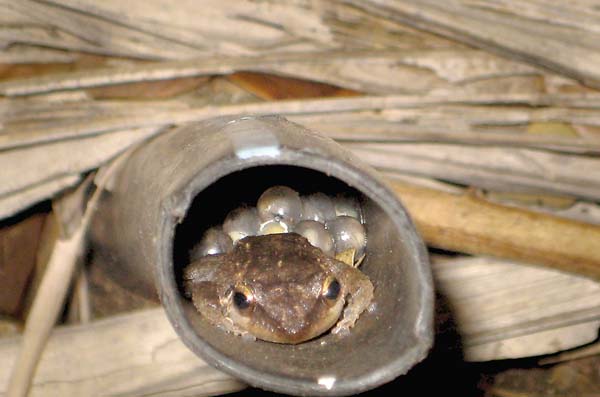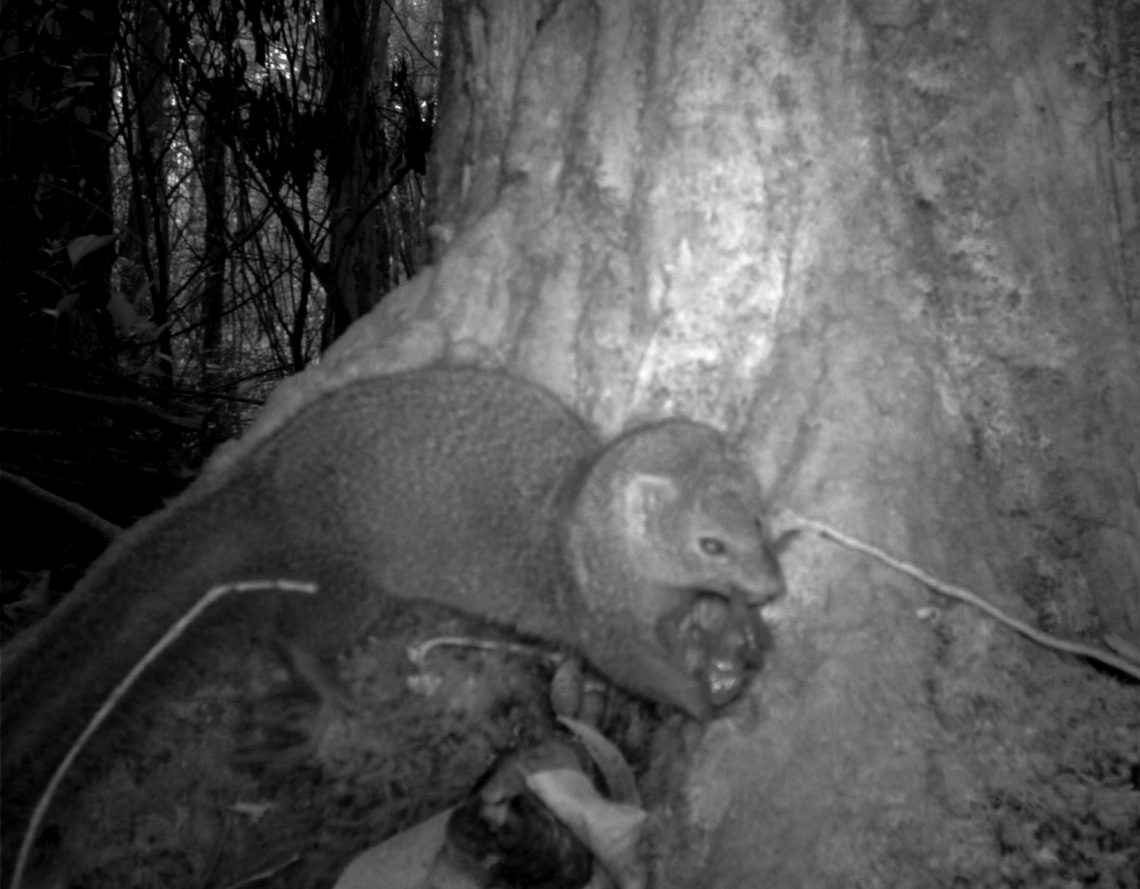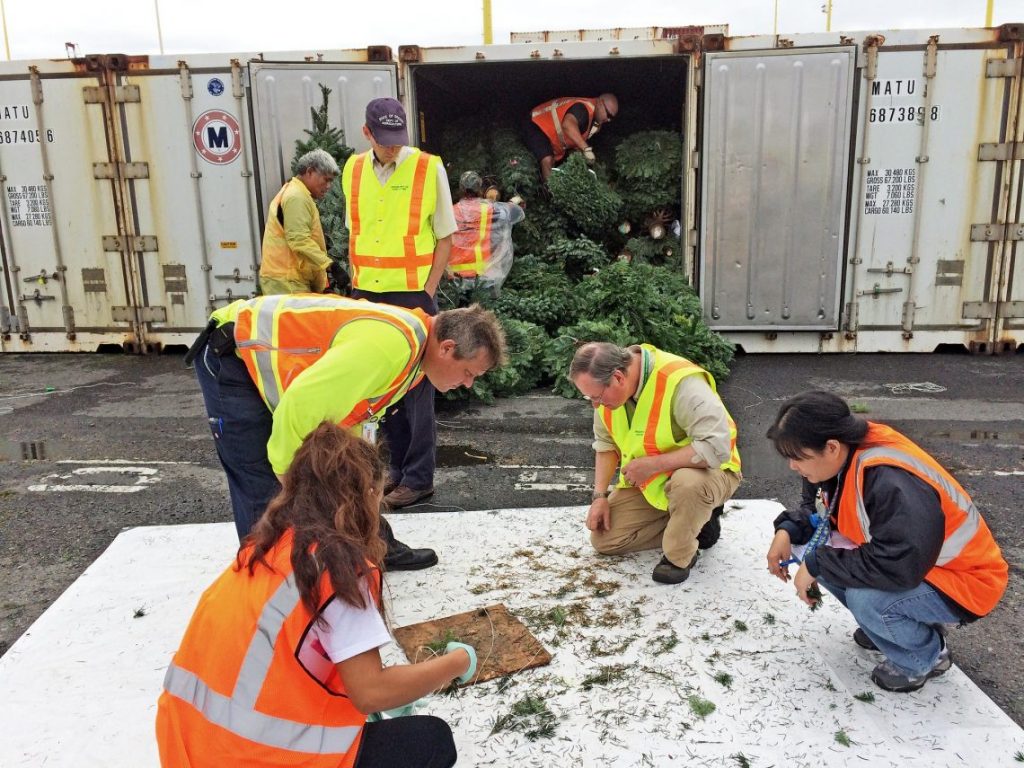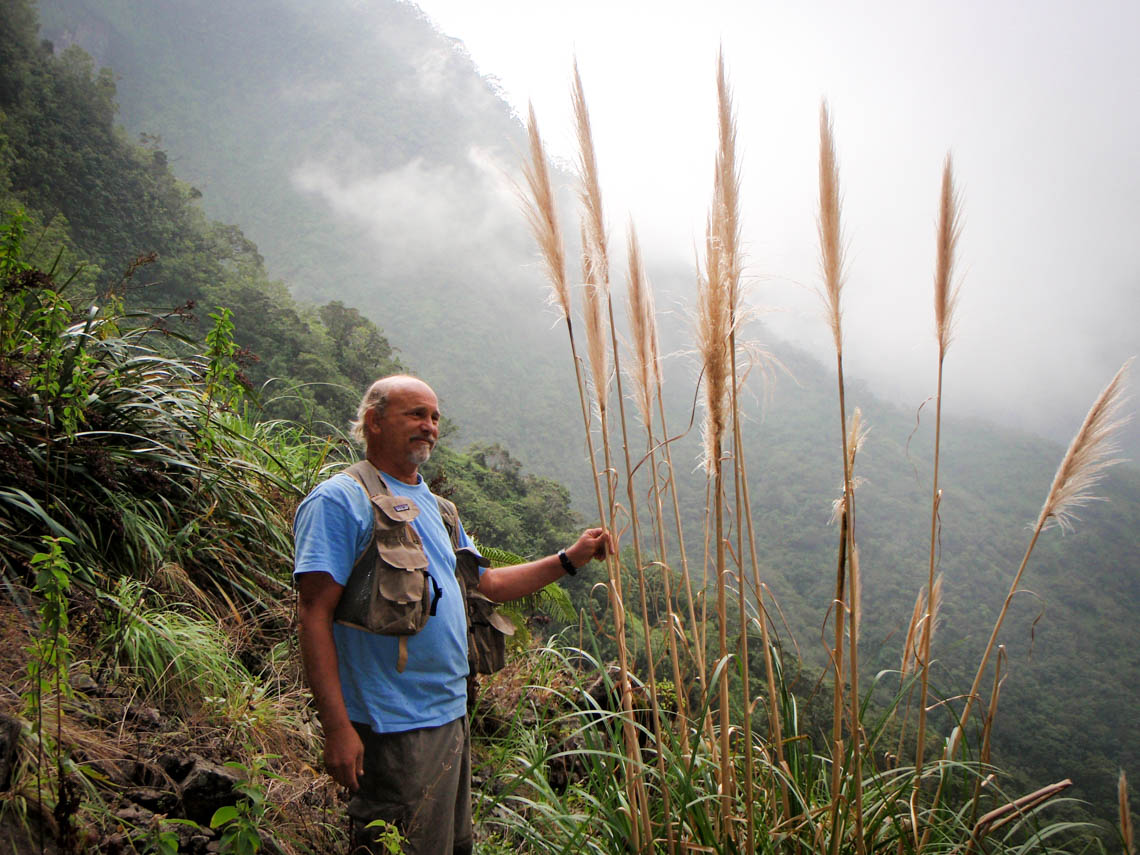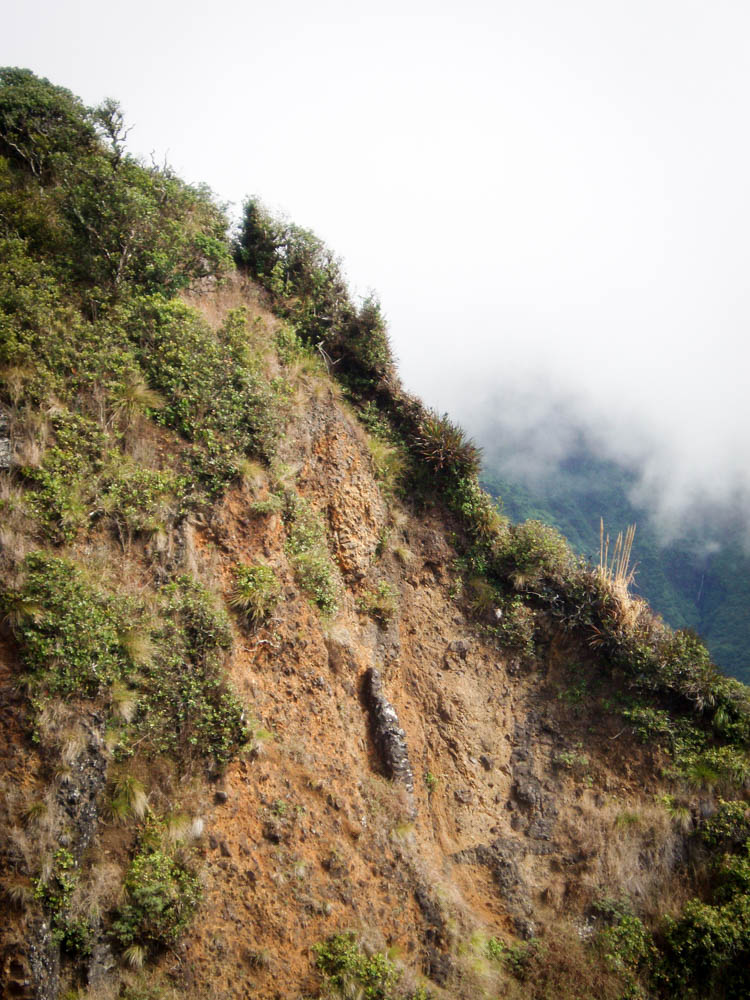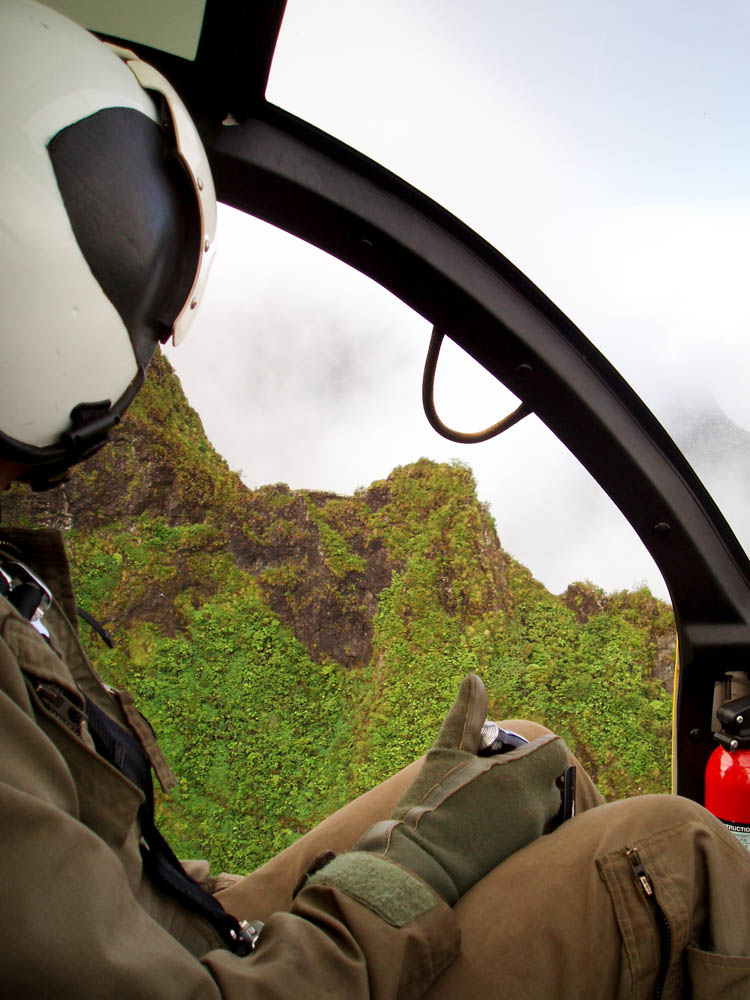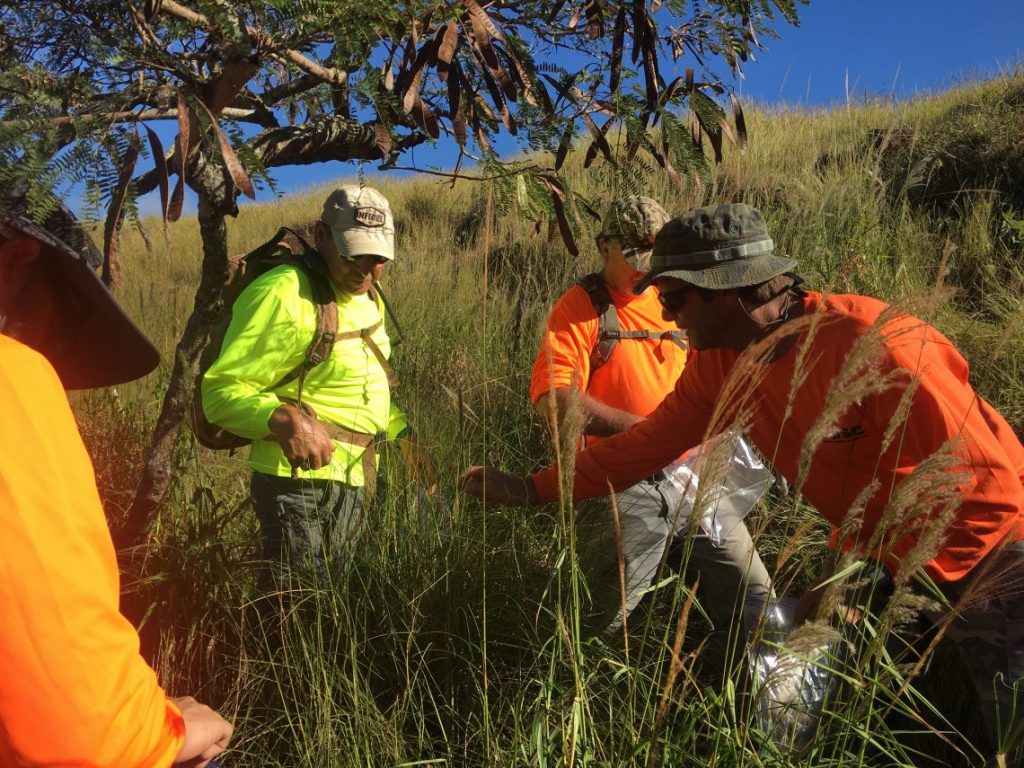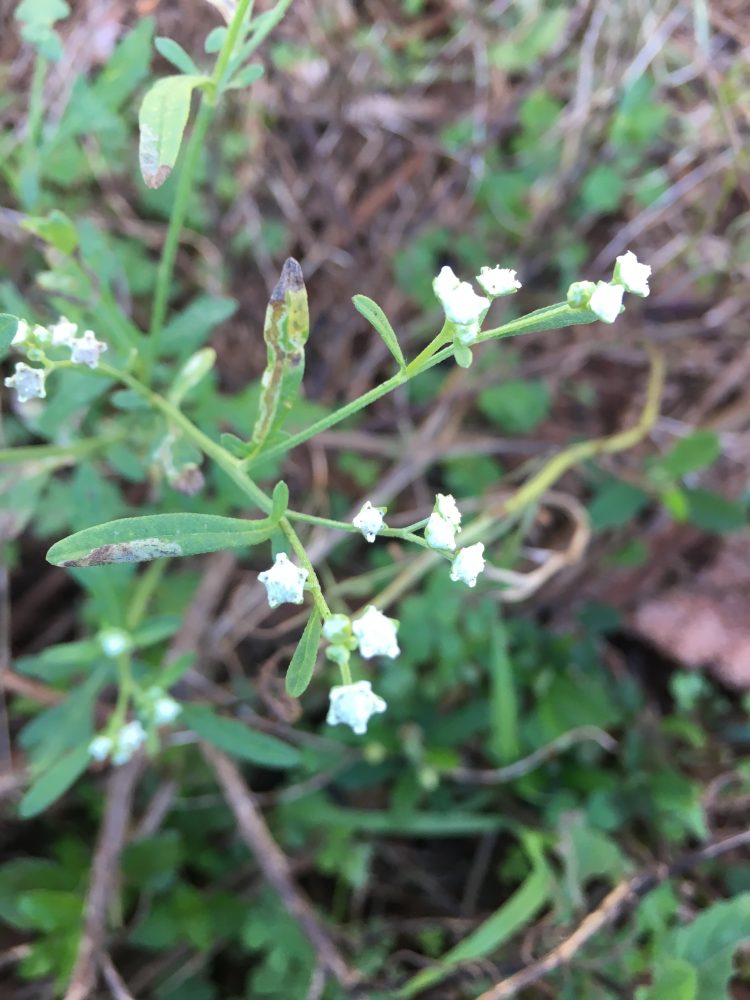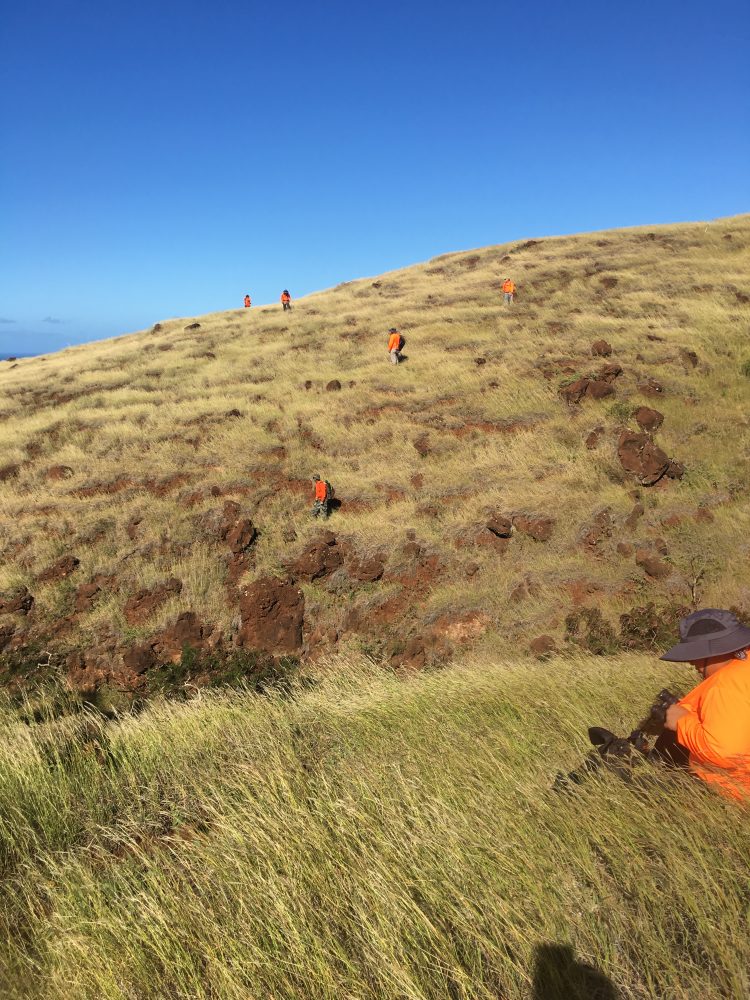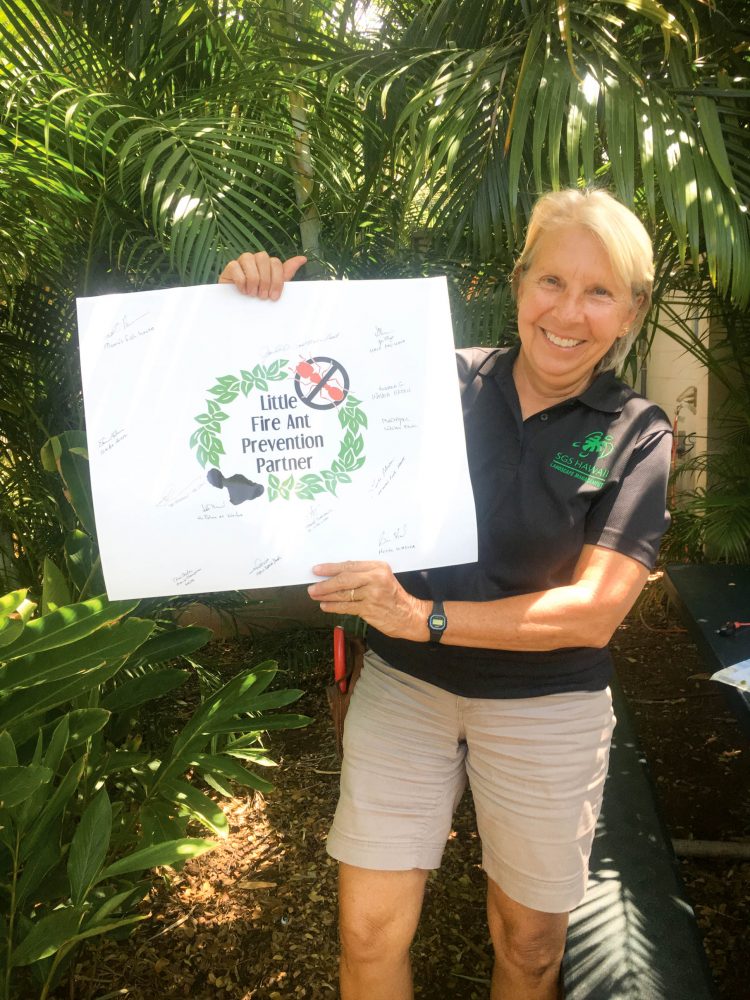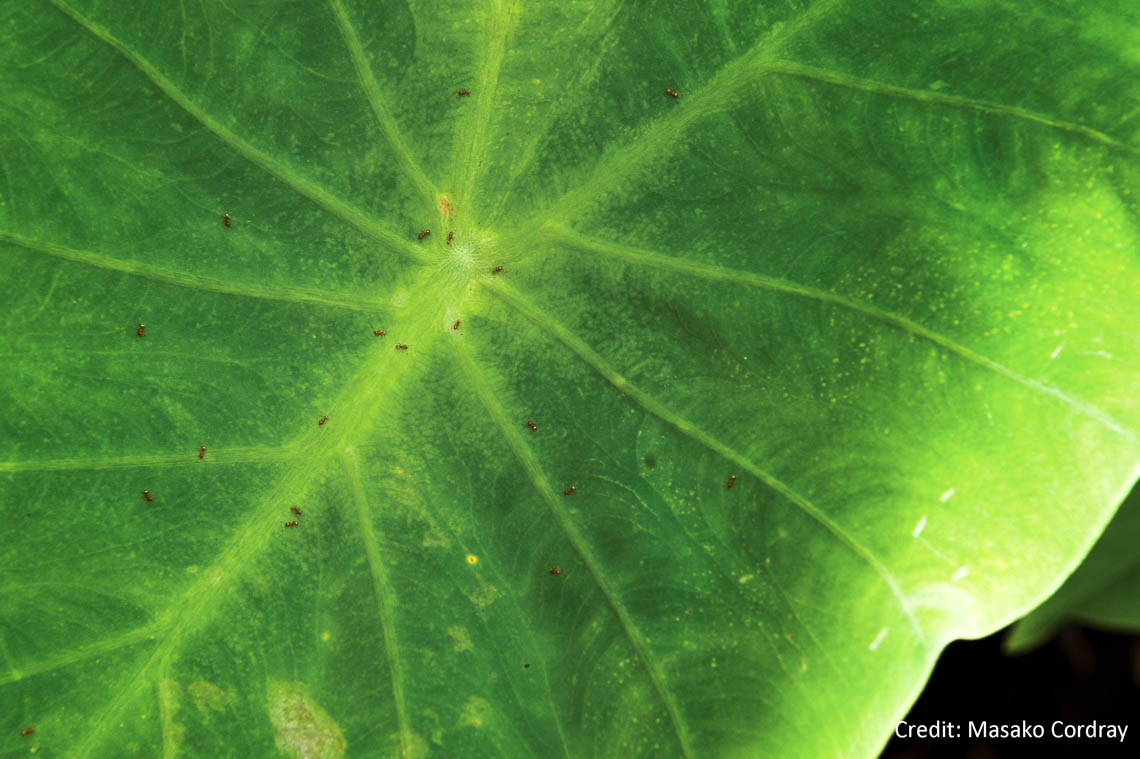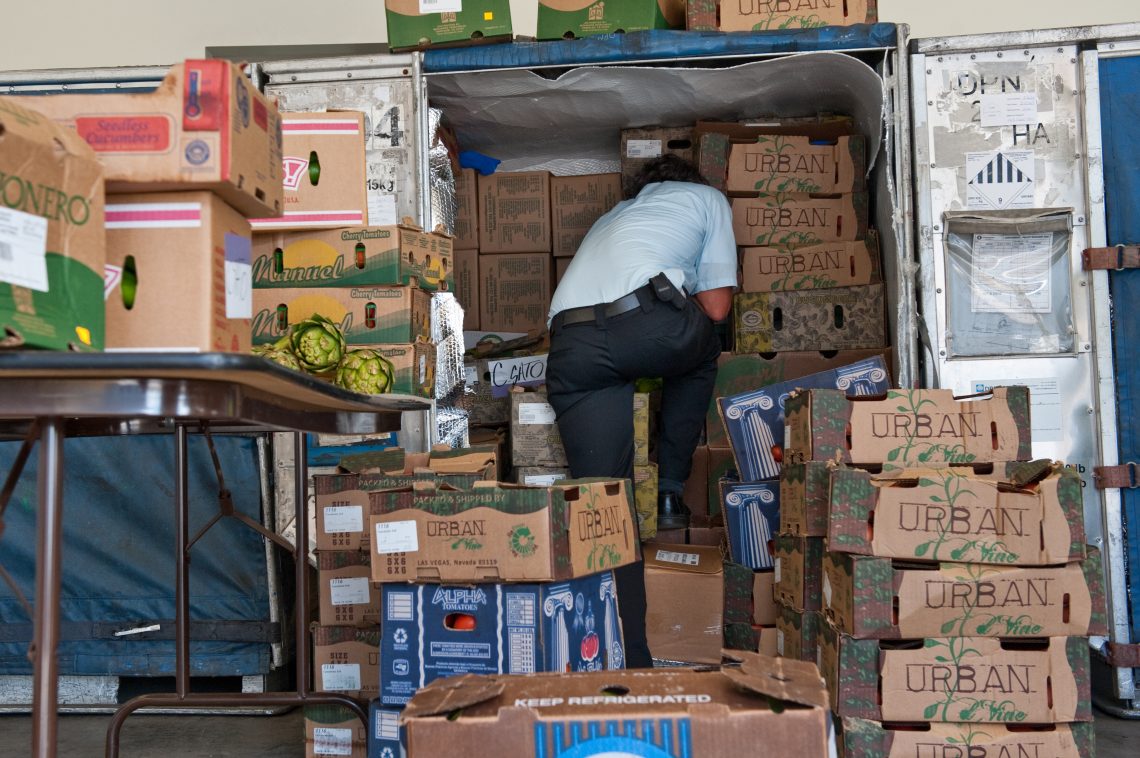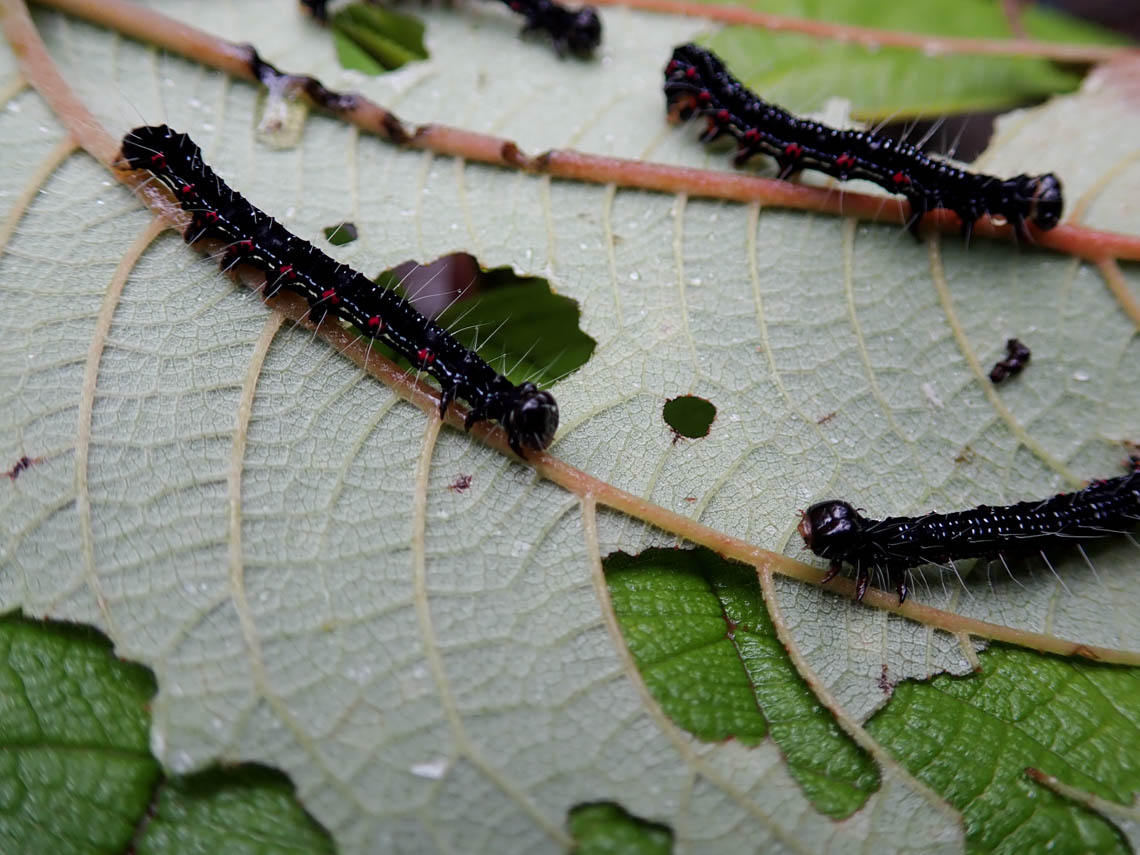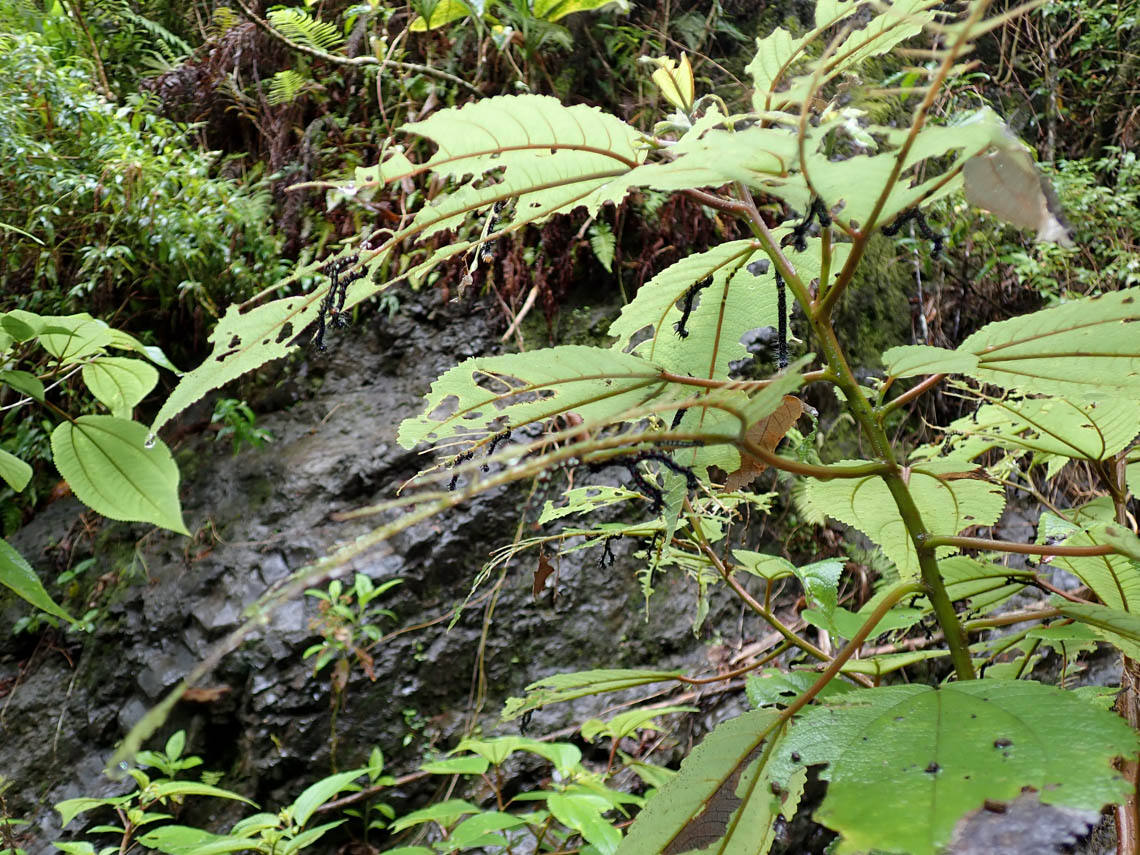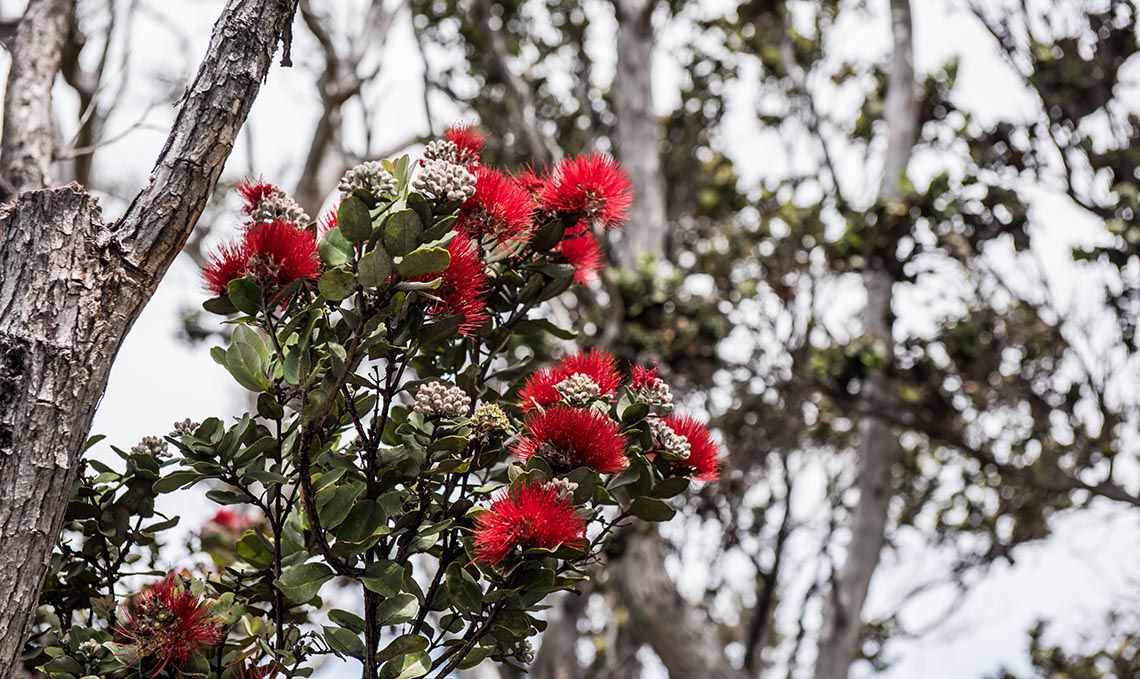
ʻŌhiʻa is both a pioneer – the first to grow on new lava– and a protector—hosting and sustaining birds, insects, and plants throughout Hawaiʻi. ʻŌhiʻa is at home in nearly every terrestrial ecosystem in the islands, from the wettest rainforests to the leeward slopes of dryland forests. Its flowers range from cool yellow to fiery red. Leaves can be small, curled and fuzzy, and snuggled together along the stem, or stretched, shiny and drooping. The tree may crawl, bonsai-like on mountain tops, or assume a stately, spreading pose above the rainforest. The plant’s scientific name, Metrosideros polymorpha, only begins to reflect the “many morphs” of ʻōhiʻa. ʻŌhiʻa exhibits so much variation that taxonomists have classified the tree into different species and varieties, seven of which occur on Maui.
While ʻōhiʻa is amazingly adaptable, the reliance of so much native biota on its existence exposes a vulnerability. Without ʻōhiʻa, our forests – dryland to mesic to the rainforest – and the species within them are in peril. Rapid ʻŌhiʻa Death, the fungal disease that has killed ʻōhiʻa across 135,000 acres of Hawaiʻi Island, and counting, makes this abundantly clear. The discovery of this pathogen on Kauaʻi in 2018 further underscores the risk, even though it is not yet known from the other islands.
“The goal is to preserve the genetic diversity of ʻōhiʻa naturally present in the landscape,” says Dr. Marian Chau.
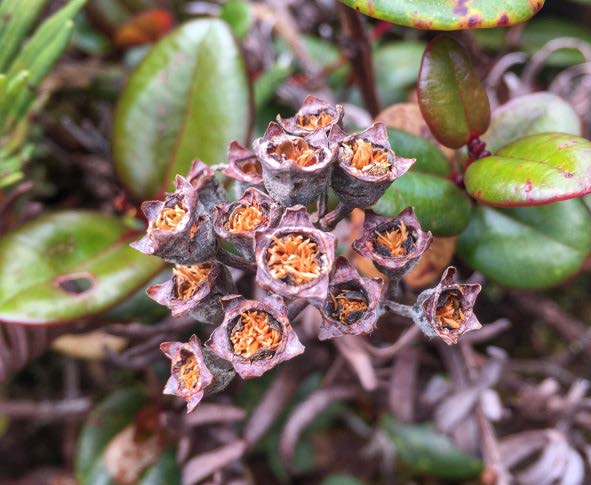
One source of hope is that ʻōhiʻa’s high degree of genetic diversity could contain the key to disease resistance. Across the state, foresters and conservation groups are partnering on a project to collect and store seeds in ʻōhiʻa seed banks. “The goal is to preserve the genetic diversity of ʻōhiʻa naturally present in the landscape,” says Dr. Marian Chau, seed lab manager at Lyon Arboretum on Oʻahu. “The seeds can be used for current research on potential genetic resistance to Rapid ʻŌhiʻa Death, and for future restoration.” ʻŌhiʻa produces plentiful seed that can be stored for up to 18 years. To preserve and represent this variation, the seed collection campaign has a lofty goal of obtaining seeds from 10,000 different trees of fourteen different species.
Each island is divided into seed zones and collectors record the zone where they harvest seeds. If there is no representation from a particular zone, Chau and her colleagues reach out to those working in the area. The Laukahi Hawaiʻi Plant Conservation Network, a voluntary alliance focused on protecting Hawaiʻi’s rare plant species, created the seed zones and manages the data.
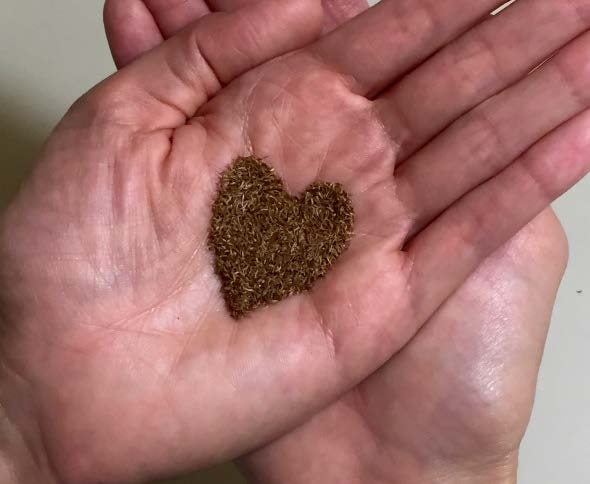
With support from the Hawaiʻi Tourism Authority, Chau has traveled across the state offering free training on how to properly collect ʻōhiʻa seeds. Her workshops cover identifying the variety; determining if seeds are ripe; cleaning and packaging ʻōhiʻa for storage; and recording and submitting collection data. The trainings are empowering community participants to help stop the devastation of Rapid ʻŌhiʻa Death. The workshops are open to the public, but only naturally-occurring ʻōhiʻa are candidates for seed banking, not landscape-planted trees. To collect seeds from ʻōhiʻa in the wild, landowner permission and necessary permits for state or federal land are required.
To guard against inadvertent destruction (e.g., from a tropical storm), the seedbanks are scattered throughout the state, with redundant banks in different locations. Hawaiʻi Island seeds are stored on that island due to concerns about the accidental spread of the disease.
You can find more information about seed banking efforts online at http://laukahi.org/ohia/ including ʻōhiʻa identification information, seed collection guidelines, data collection, and needs. Learn more about Lyon Arboretum’s Seed Conservation Laboratory at manoa.hawaii.edu/lyon/research/hrpp/. Stay up to date on Rapid ʻŌhiʻa Death at rapdiohiadeath.org and through the Rapid ʻŌhiʻa Death Facebook Page.
Lissa Strohecker is the public relations and education specialist for the Maui Invasive Species Committee. She holds a biological sciences degree from Montana State University. Kia’i Moku, “Guarding the Island,” is prepared by the Maui Invasive Species Committee to provide information on protecting the island from invasive plants and animals that can threaten the island’s environment, economy, and quality of life.
This article was originally published in the Maui News on June 9th, 2019 as part of the Kia‘i Moku Column from the Maui Invasive Species Committee.
Read more Kiaʻi Moku articles


